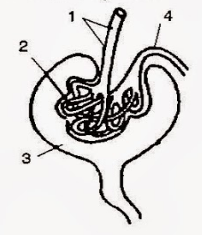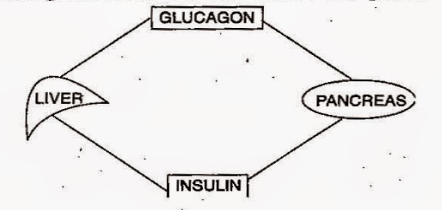 Short Answer Type
Short Answer TypeWith reference to the human ear, answer the following questions:
(iii) Name the part of the ear associated with (1) static balance, (2) hearing and (3)
dynamic balance.
With reference to the human ear, answer the following questions:
(iv)Name the nerve which transmits messages from the ear to the brain.
Name an accessory gland found in the male reproductive system and state the function of its secretion.
Write the difference between the following pairs by following the indications in the brackets:
(i) Antiseptic and disinfectant (an example for each)
Write the difference between the following pairs by following the indications in the
brackets:
(ii) Erythrocytes and leucocytes (function)
Write the difference between the following pairs by following the indications in the
brackets:
(iii)Guttation and bleeding in plants (cause)
Write the difference between the following pairs by following the indications in the
brackets:
(iv)NADP and AIDS (expand the abbreviation)
Write the difference between the following pairs by following the indications in the
brackets:
Monohybrid and dihybrid cross (phenotypic ratio)
 Long Answer Type
Long Answer TypeStudy the diagram given below and answer the following questions: 
(i) Name the region in the kidney where this structure is present
(ii) Name the parts labelled 1, 2, 3 and 4.
(iii) Name the stages involved in the formation of urine.
(iv)What is the technical term given to the process occurring in 2 and 3? Briefly describe the process.
(i) The given structure is present in the renal cortex of the kidney.
(ii) Parts are;
1. Afferent arteriole
2. Glomerulus
3. Bowman's capsule
4. Efferent arteriole
(iii) Stages involved in the urine formation are:
1. Ultrafiltration
2. Reabsorption: Selective reabsorption and tubular secretion
(iv)The technical term given to the process in 2 and 3 is ultrafiltration.
The blood flows through the glomerulus under great pressure, which is much greater than in the capillaries elsewhere. The reason for this greater pressure is that the efferent arteriole is narrower than the afferent arteriole. This high pressure causes the smaller molecules of the blood to filter out through the glomerulus into the renal tubule. This filtration under extraordinary force is called ultrafiltration. The fluid entering the Bowman's capsule is called 'glomerular filtrate'.
Study the diagram given below and answer the following questions:
(i) Name the pancreatic cells which produce (1) glucagon and (2) insulin.
(ii) State the main function of (1) glucagon and (2) insulin.
(iii) Why is the pancreas referred to as an exo-endocrine gland?
(iv) Why is insulin not given orally but is injected into the body
(v) What is the technical term for the cells of the pancreas which produce endocrine hormones?
(vi) Where in the body is the pancreas located?
